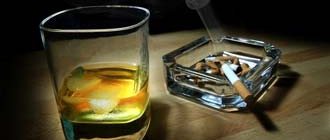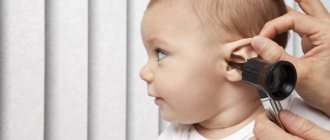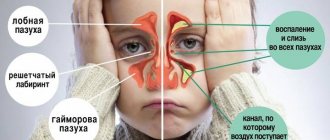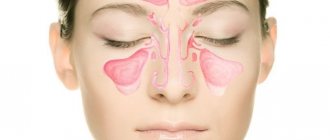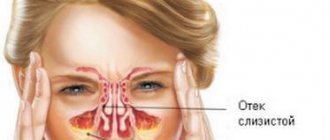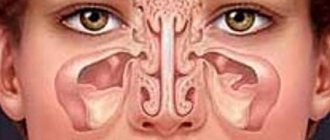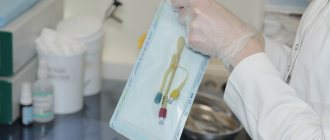Sinusitis is an inflammatory disease of one or more sinuses. This disease affects the maxillary (maxillary) sinuses. The source of inflammation gradually covers the entire nasal mucosa, simultaneously causing severe swelling and hyperemia of the tissues.
Depending on which side the inflammatory process develops, right-sided or left-sided sinusitis is observed. In some cases, the pathological process can affect several sinuses at once. This disease is called hemisinusitis. As ENT practice shows, every year the number of patients with this disease increases significantly.
The main reasons for the development of left-sided sinusitis
Left-sided acute sinusitis most often originates due to a decrease in local immunity, as a result of which the protective functions of the mucous tissues of the nasal cavity are reduced. Among other things, the following factors are of great importance in the development of the disease:
- Anomalies of the nasal cavity - sinusitis often develops against the background of a deviated nasal septum, the presence of ridges, and also spines on the nasal septum.
- Chronic nasal diseases - chronic pathologies leading to sinus inflammation include nasal adenoids, polyps, chronic vasomotor, allergic rhinitis, etc.
- Diseases of the upper teeth – the roots of the upper teeth are located in close proximity to the maxillary sinuses. Often, dental disease or root growth leads to sinus inflammation. This is how odontogenic sinusitis develops.
In other cases, inflammation of the maxillary sinus develops against the background of untreated influenza, ARVI and other colds. As the inflammatory process progresses, the patient experiences swelling of the mucous tissue, which clogs the connecting holes. In the process of all this, an accumulation of purulent masses occurs, which serve as an activator for the proliferation of pathogenic microorganisms.
As numerous studies of the bacteriological contents in the inflamed sinus have shown, in most cases the disease develops due to the fault of the following bacteria: Staphylococcus aureus, Pseudomonas aeruginosa, Proteus, Enterobacter. In some cases, viruses, fungi, and mixed microflora are observed.
Clinical picture of the disease
Left-sided acute sinusitis is characterized by the following clinical symptoms:
- Pain syndrome, which is localized on the left affected side, spreading to the frontal part, facial area, neck and teeth.
- Mucopurulent discharge from the nose, which is observed directly on one side. With severe nasal congestion, the discharge is scanty and thick.
- Impaired free nasal breathing. The accumulation of purulent masses, as well as severe swelling of the mucous membranes, makes breathing very difficult. It is extremely difficult to do without the use of vasoconstrictor drugs.
- Symptoms of intoxication of the body, which are expressed in increased body temperature, increased fatigue, loss of appetite, lethargy, and headaches.
- Severe swelling of the cheek area and lower eyelid.
- Drainage of pathogenic mucus along the inner wall of the nasopharynx.
- Common symptoms of the disease are red eyes, headache, toothache, and stuffy ears.
To make a diagnosis of “left-sided sinusitis,” the doctor conducts a thorough medical history, collects the necessary tests, visually and endoscopically examines the nasal cavity, and also conducts X-ray studies. Based on the collected data, the final result is determined and the necessary treatment is prescribed.
It is worth noting that acute left-sided sinusitis lasts on average about two and a half weeks. Untimely or incorrect treatment can lead to the development of a chronic form of the disease, and the patient also runs the risk of “catching” serious complications.
Symptoms and signs
The development of left-sided sinusitis is marked by the following symptoms:
- there is a feeling of heaviness in the nose, bridge of the nose, and the area of the left eye;
- discomfort gives way to a headache, which first covers the left half and then spreads to the entire head;
- nasal breathing becomes difficult until it stops completely;
- the timbre of the voice changes, the patient begins to nasal;
- there is copious discharge from the nose, which may be yellow (purulent) or green;
- a puffy “bag” may form under the left eye;
- temperature rises;
- the sense of smell decreases (even to the point of disappearance);
Symptoms are present against a background of general loss of strength, fatigue, decreased appetite and sleep disturbances.
Severe nasal congestion can obstruct the flow of secretions, so they may be absent. Symptoms are less pronounced in the morning; in the middle of the day the condition worsens. Regional lymph nodes (under the left lower jaw and left ear) may become enlarged and painful when touched.
Treatment methods
Timely and well-designed therapy will cure acute left-sided sinusitis once and for all, which cannot be said about the chronic course of the disease. Since during the acute phase the mucous tissues did not have time to accept irreversible changes, proper therapy will eliminate the inflammatory process without much difficulty.
Today, the treatment of sinusitis is a complex therapy, which consists of the use of various medications, therapeutic procedures, as well as traditional methods of treatment. Of course, you should not make your own decision about choosing this or that medicine. Treatment should be prescribed by an ENT doctor who will assess the patient’s condition and, based on the tests, conduct complex therapy.
The treatment procedure for acute sinusitis may include the following:
- Taking antibiotics – in most cases, antibiotic therapy cannot be avoided. The effectiveness and speed of positive resolution of the disease depends on the correct choice of antibacterial agent.
- Therapy with antihistamines - in some cases, inflammation of the maxillary sinuses may occur due to an allergic reaction. Therefore, the doctor decides to take antihistamines, such as Tavegil, Suprastin, Zyrtek, etc.
- Vasoconstrictor nasal drops - vasoconstrictor drugs are necessary to improve the outflow of accumulated mucus and restore free breathing.
- Immunomodulators - quite often, due to the development of inflammation, a person’s defenses decrease. Taking immunomodulators will come in handy.
- Rinsing the nasal cavity is a necessary procedure for the effective treatment of sinusitis. Sinus rinsing can be done in a hospital setting, as well as at home using special solutions purchased at the pharmacy (Dolphin, etc.).
- Sinus catheter “Yamik” is designed for effective rinsing of the nasal cavity with a special device due to the created pressure.
- Puncture of the maxillary sinus is performed as a last resort, when it is necessary to release the sinus from accumulated pus in a short period of time.
- Endoscopic maxillary sinusotomy is most often performed when odontogenic sinusitis develops. It is one of the most difficult operations for sinusitis.
Self-medication can lead to very disastrous results. Therefore, before using any drug, you should visit an ENT specialist who will advise on the most correct and safe treatment.
Source: stopotit.ru
Symptoms of acute sinusitis
In most cases, patient complaints with this disease are quite specific. The most common symptoms of acute sinusitis are:
- difficulty breathing through the nose;
- copious mucous discharge, sometimes with pus;
- impaired sense of smell;
- pain in the maxillary sinuses and forehead.
Acute sinusitis of the maxillary sinus in mild form usually does not require any special treatment. Therapy in this case is symptomatic. If clinical signs intensify, the disease continues for more than 5 days - this is an exacerbation of sinusitis. The patient's condition worsens; signs of the disease intensify, accompanied by pain. Over time, acute unilateral, bilateral sinusitis gradually turns into a more severe form.
In this case of acute sinusitis, the symptoms will be more pronounced:
- high temperature (above 38° C);
- severe headache;
- general intoxication of the body;
- swelling of the face.
Advanced forms of the disease can lead to the development of dangerous intracranial complications of acute sinusitis. Sometimes a severe infection can be fatal. Therefore, only an experienced ENT doctor should treat acute sinusitis.
Causes of the disease
It is believed that in order for sinusitis to develop on the left side of the paranasal sinus, relevant factors must be present in the patient’s life, directly or indirectly, but influencing the progression of this disease. Therefore, the following reasons are identified, the presence of which can cause the left-sided form of sinusitis.
Hypothermia of the facial disc
Staying outside for a long time in environmental conditions when the air temperature is below 0 degrees and a strong wind blows on the left side of the face. 30-40 minutes of contact of epithelial tissues with cold and frosty wind is enough for deep hypothermia of the left maxillary sinus to occur with the further development of inflammation of the mucous membrane. In fact, this is a cold factor, so the treatment of this pathology is considered the simplest in terms of the duration of therapy and the number of drugs used.
Dental diseases
If a patient has damaged teeth in the left upper dentition, the crowns of which are completely or partially destroyed, then in 73% of cases they cause a person to develop sinusitis localized exclusively in the left part. This is justified by the fact that teeth affected by caries automatically become a source of a wide variety of microbes, which enter the nasal canals through the thin interdental septum separating the maxillary sinus and the oral cavity.
Autoimmune diseases
Hereditary or acquired blood diseases that disrupt the active functioning of immune system cells negatively affect the body’s protective function against pathogenic microflora. Therefore, if bacteria, viruses or fungal infections enter the cavity of the left paranasal sinus, the development of inflammation due to physiological weakness of the immune system cannot be ruled out.
Mechanical injuries
Damage to the surface of the face on the left side associated with severe bruising of epithelial tissues, deep cuts that heal poorly over a long period of time and inflammation of the left paranasal sinus occurs as a complication of slow tissue regeneration. A similar situation can develop after surgery. Especially if a bacterial infection has been introduced into the wound cavity.
Deviated nasal septum
Deformation of the cartilage separating the two nasal openings with a displacement of the respiratory canal of the nasopharynx to the left side can cause inflammation inside the maxillary sinus on the left side.
The fact is that in the presence of a narrowed lumen of the nasal opening, the natural circulation of air is disrupted, the paranasal sinus is not ventilated and both air stagnation and mucus decay occur inside it.
Other causative factors that can cause left-sided sinusitis cannot be excluded. In this case, the most common ones encountered in medical practice are presented. The main thing is that there is a prerequisite for a negative impact on the paranasal sinus on the left side.
The first symptoms of sinusitis on the left side
Signs of left sinusitis are accompanied by an acute or sluggish clinical picture, depending on what caused the development of the disease. Therefore, the patient may experience the following symptoms:
- general weakness, malaise, drowsiness and loss of appetite;
- increased body temperature, which in most cases reaches 37 degrees Celsius (much less often, left-sided inflammation provokes a fever of 38-39 degrees);
- headache, localized closer to the bridge of the nose and shifted to the left side of the face (intensifies when tilting the head forward);
- constant congestion of the left nostril, and all attempts to blow out the mucus do not bring a positive result, since there is acute swelling of the nasal canal;
- during palpation of the circumference of the nose on the left, aching pain is felt;
- the lower eyelid of the left eye is swollen, the white is red and has a general painful appearance (tearing may be present);
- the mucous membrane in the left nostril is purple, dry and may be covered with a red rash resembling irritation;
- pain when lightly tapping the upper teeth on the left (this symptom is present if sinusitis affects the lower segment of the maxillary sinus).
The bacterial form of sinusitis on the left, caused by such dangerous microorganisms as Staphylococcus aureus, Pseudomonas aeruginosa or streptococcal infection, from the first days of its development is accompanied by such a negative symptom as the accumulation of purulent exudate in the sinus cavity.
Types and symptoms of sinusitis
Diagram of the difference between sinusitis and a healthy nose
Depending on the form of occurrence, acute, chronic or purulent sinusitis is distinguished. In this case, the chronic form has several varieties:
1. Exudative – catarrhal, serous, purulent.
Thus, acute catarrhal sinusitis is accompanied by viscous and rather liquid discharge. In this case, the nasal mucosa swells greatly. If catarrhal sinusitis is not treated in time, stagnation of mucus can provoke the development of a purulent form of the disease.
2. Productive - necrotic, atrophic, fungal, polypous, caseous, etc.
Depending on the type of pathogen, the following types of right-sided sinusitis are distinguished:
- Viral. It develops against the background of acute respiratory viral infection, in which all the mucous membranes of the respiratory organs become inflamed, including the maxillary sinuses. In this case, acute catarrhal sinusitis usually develops, in which nasal discharge has a clear consistency without blood or pus. When the immune system is weakened, a bacterial infection can occur, and then catarrhal sinusitis can develop into a purulent form.
- Bacterial. Usually it is a consequence of the colonization of the mucous membrane by bacteria - streptococci, staphylococci, pneumococci. It often develops when foreign bodies enter the sinuses, which is especially important for a child. Purulent processes in the mouth provoke odontogenic right-sided sinusitis. Periodontitis of the upper jaw is especially dangerous. It is in this case that inflammation most often causes odontogenic sinusitis.
- Fungal. This form of the disease develops due to frequent use of antibiotics or hormonal drugs. Also at risk are people with severe immunodeficiency and the elderly.
- Traumatic. May result from damage to the anterior nasal septum or skull. If this process is not detected in time, a viral or fungal infection may develop, as well as purulent processes in the maxillary sinuses.
- Allergic. It develops as a result of contact with aggressive allergens, which leads to severe swelling of the nasal mucosa, as well as its sinuses.
The acute form of right-sided sinusitis has the following symptoms:
- Blocked right nostril.
- A runny nose that lasts longer than a week.
- Pain due to sinusitis in the right side of the nose, as well as in the area of the frontal sinus, which intensifies when tapping or pressing.
- Cloudy discharge from the right nostril.
- Swelling of the right cheek.
- Swelling of the right eyelid.
- Fatigue and deterioration in well-being.
- Body temperature is more than 37 degrees.
- Drainage of mucus along the inner wall of the larynx.
To prevent the development of complications, you need to consult a doctor in the first week of the disease. If treatment is not started in time, acute sinusitis can develop into chronic sinusitis. At the same time, during the transition of the disease to the chronic phase, the symptoms are mild, so it is very important to diagnose it in the acute stage.
It is necessary to seek the advice of a specialist as early as possible so as not to develop sinusitis.
Chronic right-sided sinusitis usually has the following symptoms:
- Poor nasal breathing due to congestion in the right nostril.
- Unpleasant smell from the nose.
- Headache.
- Dry throat.
- Weakness and fatigue.
- Drainage of mucous secretions along the inner wall of the larynx.
- Small purulent (yellow snot) and mucous discharge from the right nostril.
- The appearance of cracks in the skin in the area of the right nostril.
- The appearance of crusts in the nasal cavity due to constant mucous secretions.
Diagnostics
Establishing an accurate diagnosis requires the otolaryngologist not only to visually examine the patient’s health in the upper respiratory tract, but also to conduct an additional examination, which consists of the following types of procedures:
- X-ray of the frontal part of the head on the left side and simultaneous fixation of both paranasal sinuses (the doctor gets the opportunity to compare the image of parts of the facial disc and find that on the left, at the location of the sinus, there is a dark spot concentrated, which is the focus of pathological inflammation);
- a blood test from a fingertip for clinical analysis and a urine sample for the purpose of its biochemical study (if autoimmune diseases and other infections are suspected, blood sampling from a vein is prescribed);
- endoscopy of the cavity of the maxillary sinus on the left side (the doctor inserts an endoscope into the nasal opening, which displays detailed information on the monitor screen about the condition of the mucous membrane, the absence or presence of inflammation);
- sampling of mucus secreted from the nose on the left side (bacteriological culture of biological fluid is performed to determine the type of infectious agents).
Complicated forms of left sinus sinusitis may require additional research in the form of a computed tomography scan of the head. It is prescribed if the attending physician suspects inflammatory processes in the peripheral tissues located in close proximity to the paranasal sinus.
How to identify left-sided or right-sided sinusitis
Before determining treatment, a thorough diagnosis is necessary by an otolaryngologist who carries out:
- patient interview;
- prescribes x-rays of the nasal sinuses;
- examines the mucous membrane, identifying inflammation and the presence of pus, swelling, dilation of superficial vessels under the eyes.
Headache is one of the symptoms of sinusitis
X-rays show inflamed lesions in the maxillary sinuses, the symptoms of which are green snot and pain. An MRI may also be prescribed to check whether there are inflammatory pathologies, tumor processes, polyps or excess fluid in the sinuses. It also reveals curvature of the nasal canals, as well as the spread of bacterial inflammation to other neighboring areas.
Computed tomography reveals a detailed map of the bone and soft tissue structure of the maxillary sinuses, reflecting the type and nature of destruction in the cavities and the area of the nasal skeleton. This diagnostic method is necessary for traumatic sinusitis, which must be treated in a different way from the standard one. CT scan indicates the presence of foreign bodies, space-occupying lesions, orbital and intracranial complications in chronic sinusitis.
A puncture or puncture of the maxillary sinus is prescribed to collect material from the inflamed area for analysis. The purulent substance is not only taken for examination, but also the maximum possible amount is removed, and the sinus is also washed with antiseptics through the drainage. This is both a therapeutic and diagnostic procedure aimed at eliminating not only the symptoms of sinusitis, but also the root cause of the inflammatory disease.
What and how to treat left-sided sinusitis?
Therapy for this disease is complex with an intensive effect on the sinus affected by the inflammatory process. Based on the results of a comprehensive examination, the doctor prescribes the following treatment regimen to the patient:
- taking intramuscular and tablet antibiotics, the task of which is to eliminate pathogenic microorganisms (the type, dosage and duration of medication is determined by the doctor based on the strain of bacteria found in the nasal mucus);
- washing the left-side sinus with antiseptic solutions purchased at a pharmacy, or prepared at home using boiled water, kitchen salt or manganese (medicine is taken into a disposable syringe with a volume of 20 ml and injected into the cavity of the nasal opening on the left, and then the patient blows his nose so that together release part of the pathogenic exudate with the liquid);
- instillation of anti-inflammatory drops into the nose (Nazol, Naphthyzin, DlyaNos, Aquamaris, Nazivin), which simultaneously relieve inflammation of the mucous membrane and also dilate blood vessels for free air circulation);
- surgical puncture of the left-sided maxillary sinus with installation of a drainage system and drainage of purulent fluid beyond the tissues of the nasopharynx (performed in an operating room under local or general anesthesia).
Left-sided chronic sinusitis allows the use of an additional physiotherapeutic procedure in the form of heating the sinus with electrophoresis. Acute left-sided sinusitis excludes these manipulations due to the high risk of exacerbation of the disease.
The total duration of treatment is 10-15 days.
Source: yadishu.com
Causes of the disease
The facial bones of the skull have small sinuses - hollow chambers located near the nose, on the bridge of the nose and in the frontal part, which are also called sinuses. The internal cavity of the sinuses contains a mucous surface similar to that of the nasal passages. The sinuses are connected to the nasal passages by a narrow anastomosis, through which inhaled air passes, warming, cleansing and moisturizing in the sinus cavity. The cavities located on both sides of the nostrils are called maxillary cavities, and their inflammation is called sinusitis.
There are several reasons for sinusitis, for example, with a prolonged runny nose, if it is not treated correctly, part of the mucous secretions, along with a viral infection, can penetrate through the anastomosis into one of the sinuses, in our case the left one, and provoke a localized inflammatory process there. It will be much more difficult to treat the disease if the inflamed mucous membrane blocks the passage through the anastomosis, since the secretion formed in the sinus has no outlet, and, losing its protective properties, lends itself to the development of pathogenic microflora, which is present in the nasopharynx in small quantities. Thus, sinusitis from catarrhal turns into a purulent form, which should be treated with antibiotics.
In addition to viruses and bacteria, there is also a hematogenous form of the disease, this is when the infection enters the sinus not through the nasal cavity, but through contaminated blood. As well as a traumatic form of sinusitis, the harbinger of which is a nasal injury that blocks the anastomosis, which leads to the accumulation of exudate in the sinus.
Symptoms
Left-sided sinusitis has the same symptoms as right-sided sinusitis, with one difference - all symptoms, except for general weakness and malaise, appear on the left.
Local symptoms of left-sided sinusitis include:
- Nasal congestion on the left side that lasts for at least a week.
- Puffiness of the face and swelling of the left cheek.
- Pain on the left side, radiating into the eye socket or jaw.
- Copious discharge from left nostril.
- Common symptoms of sinusitis include:
- Pain in the head when bending forward or making sudden turns.
- A feeling of burning and distension at the site of accumulation of purulent exudate.
- Deterioration of sleep, appetite, performance, general loss of strength.
- Sometimes there is an elevated body temperature.
- Deterioration of sense of smell.
Symptoms of sinusitis may differ slightly depending on the form of the disease - acute or chronic, the causative agent of inflammation - bacteria or virus, as well as the severity. In the initial and middle stages, conservative treatment is carried out, consisting of taking medications and performing physical procedures. In severe cases, left-sided sinusitis is treated with surgery.
Symptoms of right-sided sinusitis
The onset of the inflammatory process can be determined by the corresponding clinical picture of the disease. If a patient has had a sore nose on one side for a long time, feels deteriorated, refuses to eat and sleeps poorly, it is important to undergo an examination by an ENT doctor. Signs of intoxication appear as warning symptoms.
Sinusitis on the right side occurs with the same symptoms as with damage to the left maxillary sinus.
The main symptoms of inflammation of the right side of the maxillary sinus include:
- pain predominantly on the right side of the face;
- feeling of pressure on the inflamed side of the maxillary sinuses;
- painful sensations when palpating the nose;
- swelling between the eyebrows;
- lacrimation;
- increased body temperature up to 39 degrees Celsius;
- photophobia;
- the appearance of copious mucous or viscous discharge of a transparent color;
- nasal congestion only on the right side;
- violation of nasal breathing;
- as the disease progresses, the patient develops yellow or green snot;
- the patient sleeps only on the left side;
- refusal to eat;
- nasality;
- painful sensations after swallowing;
- dryness in the nasal mucosa;
- itching and irritation of the nasal passages;
- swelling of the eyelids;
- change in voice timbre;
- swelling of the mucous membrane;
- change in color of the nose and mucous membranes;
- strong signs of intoxication.
Unlike the acute or chronic form of the disease, sinusitis on the right side is accompanied by severe fatigue , the presence of foul aromas from the mouth or nose, as well as a constant cough.
Important! A cough with sinusitis appears as a reflex process due to the flow of mucus down the throat.
In addition, additional symptoms include the formation of small cracks in the area of the right nostril, as well as crusts in the nasal passages.
Regardless of the causes and clinical picture of the disease, the attending physician must determine the symptoms and prescribe treatment for right-sided sinusitis.
Treatment methods
Acute left-sided sinusitis requires treatment with an integrated approach. The main tasks that the doctor sets for himself when describing the treatment regimen are:
- Reduce inflammation by eliminating the source of infection or using corticosteroid drugs that block enzymes that promote inflammation.
- To eliminate the infection, antibiotic therapy is used for this. In case of viral etiology of the disease, antibiotics are ineffective, however, for the purpose of prevention, the nasal passages are sanitized with antiseptic solutions.
- Drainage of the left sinus is carried out by rinsing with a solution of sodium chloride, which dilutes mucus, or Decasan or Miromistin - broad-spectrum antiseptics.
Often, sinusitis develops against the background of allergic rhinitis, which is accompanied by severe swelling of the mucous membrane and the formation of a large amount of liquid and transparent secretion discharged from the nose.
Treatment of allergic rhinitis is aimed primarily at eliminating the root cause of the disease, therefore treatment is carried out with antihistamines.
